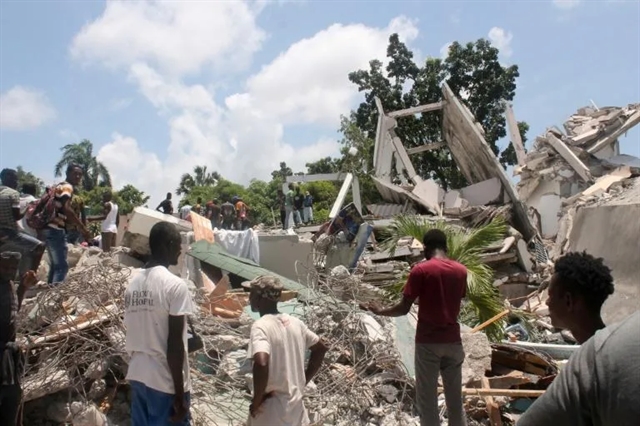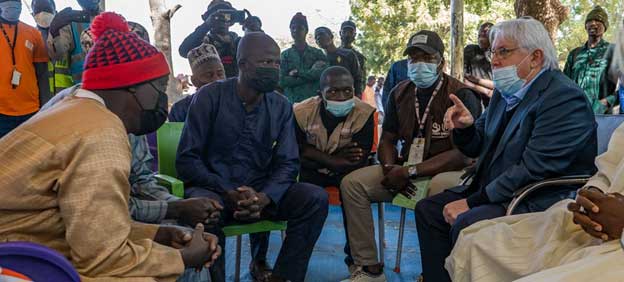[ad_1]
A shadowy pressure that had risen from the chaos of the Soviet Union’s defeat, the Taliban was a no match for the U.S. navy at the start of Operation Enduring Freedom in 2001. But, beneath the facade of navy amateurishness and a fast preliminary collapse lurked a hardness born of generations of battle. Doggedly the Taliban and its navy continued to exist, with the assistance of a number of regional powers aligned in opposition to U.S. targets. And within the weeks for the reason that announcement of U.S. withdrawal, it has made stunningly speedy beneficial properties, culminating within the takeover of Kabul on Sunday.
This conjures up a dramatic scene from a half-century in the past — one which advised a sobering story of a wartime failure that when appeared unimaginable. A single helicopter sat precariously on a Saigon rooftop in 1975, rescuing determined stragglers because the struggle in Vietnam collapsed into final wreck. After a decade of wrestle, and over 58,000 People useless, South Vietnam was no extra. Whereas most People had been shocked on the rapidity of South Vietnam’s demise, those that had adopted the unfolding of the struggle carefully knew that the top was coming. Additionally they knew its trigger: The USA hadn’t helped construct a sustainable South Vietnamese authorities and navy, one thing that appears to have occurred once more in Afghanistan.
The Geneva Accords of 1954 and the ouster of the French from Southeast Asia dropped at life the nation of South Vietnam. All through its brief historical past, the fractured younger nation, just like the Afghan authorities as we speak, confronted an inside risk, the Viet Cong, and an exterior risk, North Vietnam. Each of those threats had been aligned with China and the Soviet Union as a part of the Chilly Conflict contest with world communism. Because the Nineteen Fifties closed, that prompted U.S. policymakers to deem the survival of South Vietnam vital to U.S. nationwide safety.
By 1960, the USA turned its eye to the creation of a South Vietnamese navy that was a smaller carbon copy of its personal — a navy based mostly on lavish use of firepower and limitless provides. Briefly, it will be a wealthy nation’s navy.
It was the only and most instant resolution to a risk that almost all People gravely underestimated. The consequence was a navy, dubbed the Military of the Republic of Vietnam (ARVN), that received battles on the power of large U.S.-supplied firepower. However the ARVN was by no means linked carefully sufficient to its individuals or nation, and it wasn’t sustainable.
This poor match was an end result of the USA merely not specializing in creating sustainability in South Vietnam. As an alternative, U.S. navy leaders had been narrowly centered on instant battlefield success. As Gen. Maxwell Taylor, former chairman of the Joint Chiefs of Employees and ambassador to South Vietnam, later mirrored, though the USA needed to win battles: “We by no means actually paid consideration to the ARVN Military. We didn’t give a d–n about them.”
The deadly strategic flaw was assuming that profitable battles, from the Ia Drang Valley in 1965 to Tet in 1968, to the Easter Offensive of 1972, would win the struggle.
But, beneath these victories was dysfunction. The South Vietnamese authorities lurched from disaster to disaster, mired in graft and infighting. The ARVN’s management was deeply politicized. Each left the South Vietnamese individuals with little religion that their authorities and navy may shield them — and little ardour for both.
With out this public belief and a South Vietnamese state able to and worthy of surviving by itself, the USA had constructed an ARVN that would win battle after battle with U.S. assist, however one constructed on quicksand. Its navy successes weren’t sufficient. In the long run wars demand political, not navy, options.
Moreover, these navy victories couldn’t proceed with out U.S. navy may — particularly air energy — underpinning the ARVN efforts. And the USA knew it.
Everybody from the CIA in 1968 to Gen. Creighton Abrams, commander of U.S. forces in South Vietnam, in 1969 to President Richard M. Nixon in 1972 acknowledged that South Vietnam was too fragile to outlive with out U.S. navy help. As Nixon and nationwide safety adviser Henry Kissinger plotted America’s exit from the struggle, Kissinger agreed along with his boss’s evaluation that it will doom South Vietnam however added that the nation was a backwater and “nobody will give a d–n.”
So it was that in 1973, after over a decade of battlefield victories however with no finish to the struggle in sight, and with the U.S. public exhausted after the lack of over 58,000 U.S. service members, the USA ended its struggle in Southeast Asia.
Realistically, the USA solely had two different choices, one among which, brute pressure, was no alternative in any respect. Visiting complete destruction on a whole nation and risking nuclear struggle amid the Chilly Conflict was by no means a viable technique.
That left sticking it out for an extended struggle, one which maybe would have continued to this present day, and dealing with South Vietnam extra as equals with a deeper understanding of what was potential in that younger nation. America, although, had little urge for food for the human and financial price of a struggle which may final generations and would have concerned the sluggish slog of actual nation-building efforts as an alternative of sharp battle victories that grabbed headlines and supplied instant, tangible outcomes.
Even worse, after the helicopters left Saigon in 1975, America did its degree finest to neglect the teachings of our misbegotten journey in Southeast Asia. The navy pivoted to expertise and maneuver to win brief sharp wars, hoping by no means to face a struggle like Vietnam once more.
However in Afghanistan, a struggle that started shortly after the terrorist assaults of Sept. 11, 2001, the USA once more confronted an extended struggle with out entrance traces. In one other eerie parallel to Vietnam, the battle occurred in a spot few People understood in service of a nation that had little maintain over its personal individuals and alongside an Afghan navy of doubtful capacity and motivation. Many battles had been received, and an Afghan military was created that mirrored our personal. However these victories and that navy sat atop a rickety nationwide construction, one stuffed with corruption. Afghan politicians commanded little loyalty from the general public, and the federal government collapsed in a matter of days with out U.S. help.
The lesson of Vietnam — and Afghanistan — is that the USA can’t win wars for nations with weak governments battling in opposition to inside turmoil and exterior threats. Absent complete struggle — with zero regard for civilian physique counts — victory requires the development of indigenous militaries that may survive with out the USA in service of governments which are worthy of their individuals’s sacrifice. Whether or not the USA can parachute in and construct such militaries and governments is an open query, however one factor is definite: On the very least, doing so would require U.S. politicians of higher understanding after which explaining the necessity and rationale for an open-ended navy effort. In spite of everything, what number of People can provide an evidence for why the USA ought to have remained in Afghanistan?
Successful battles is each flashy and mandatory, however actual sustainability and, thus, victory can solely include a deep understanding of indigenous cultures, an intensive and long-term alliance and the constructing of a steady authorities that offers its individuals safety and hope — and instructions loyalty.
When the USA contemplates launching wars like Vietnam and Afghanistan once more sooner or later, solely understanding this actuality will permit the USA to keep away from repeating the previous once more.
[ad_2]
Source link
















